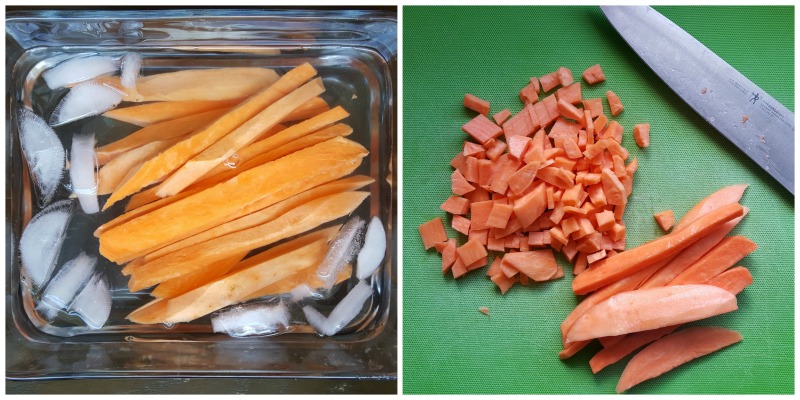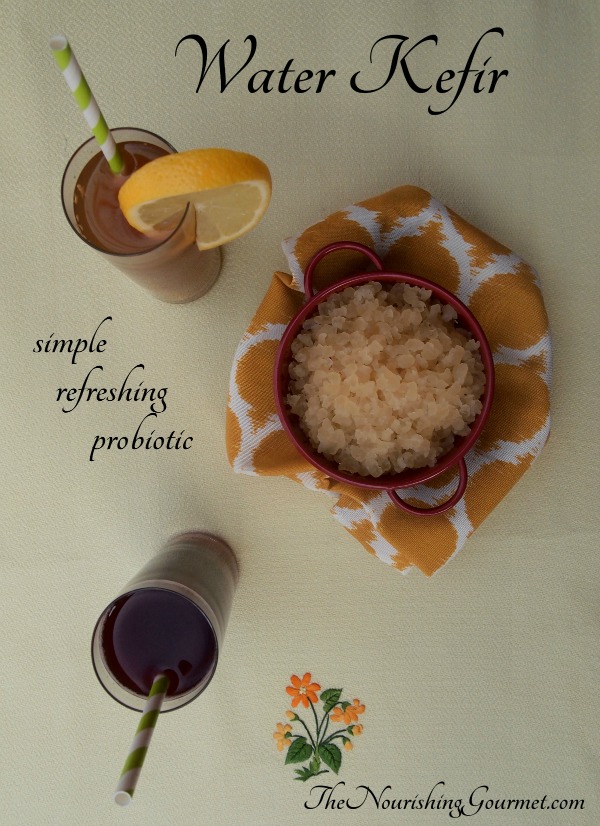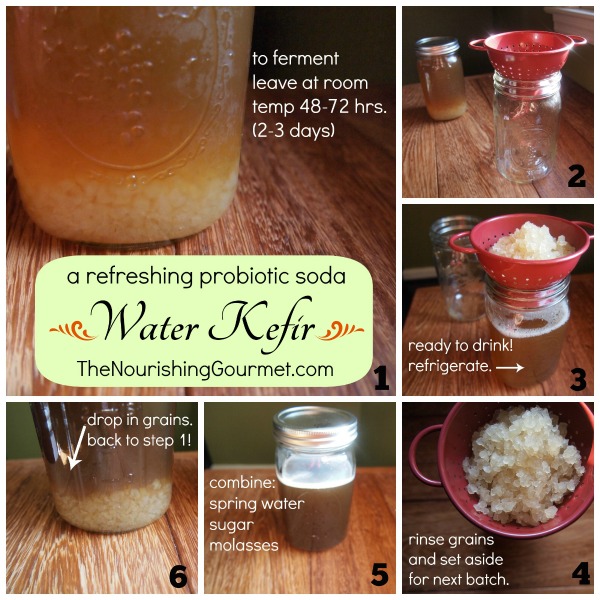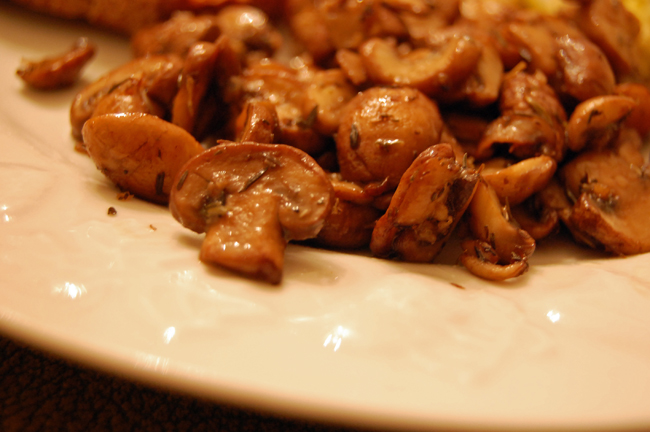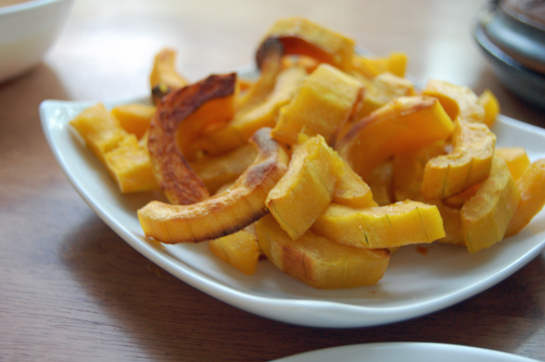By Natalia Gill of An Appetite For Joy
What could be better than diced sweet potatoes fried up with garlic and green onions, then topped with wild peppery arugula, salty feta and a sprinkle of sumac? Not much in this world if you ask me.
This Greek sweet potato hash is also versatile – delicious on its own or stuffed into a pita pocket or lettuce wrap!
One thing I love about the direction Kimberly takes with this blog is learning to save money while eating right. She came up with the idea of buying meal ingredients at Trader Joe’s with $15 in pocket and I thought it was a fun challenge!
I didn’t include cooking fat and spices in the cost. To more than offset this, know that there will be plenty of leftover sweet potatoes, arugula and sheep feta. My son loves packing the feta with olives in his lunch. And the extra sweet potatoes come in handy for our favorite dessert – Sweet Potato Pie with Lemon Zest.
3 FAVORITE TJ’S FINDS
When creating the recipe, I wanted to highlight a few of my favorite items at Trader Joe’s:
Sweet potatoes – I find TJ’s to have good prices on basic organic sweet potatoes.
Wild arugula – This was a new one for me. I like that there are a couple of wild-grown foods in the store as a cost-saving option compared to organic (wild blueberries and now wild arugula). This bagged arugula was amazingly fresh and the best arugula I have ever purchased from a grocery store. It was almost as tasty as the one I buy from a local farmer.
Sheep feta – I love this stuff. It comes in a sizable block that is pre-cut into manageable pieces. This cheese is much creamer than cow-milk feta and easier on digestion, like goat’s milk. It lasts all week for us!
COST BREAKDOWN
3 lb bag of sweet potatoes – $4.49
wild arugula – $2
green onions – $1.29
sheep feta – $6.49
lemon – 50 cents
TOTAL – $14.77
This meal comes together in a flash, especially if you can grab a few minutes earlier in the day to prepare the sweet potatoes (I like breaking up cooking tasks). I just cut them into french fry shape (a good knife makes this easy!) and soak in ice water in the fridge til I’m ready to cook.
NEED MORE EASY, FRUGAL MEAL IDEAS?
Paprika Chicken Legs (Slow Cooker)
Homemade Instant Noodle Bowls
Easy Mini Meatloaves (Paleo)
14 Easy Dinner Recipes that are Healthy and Frugal too!
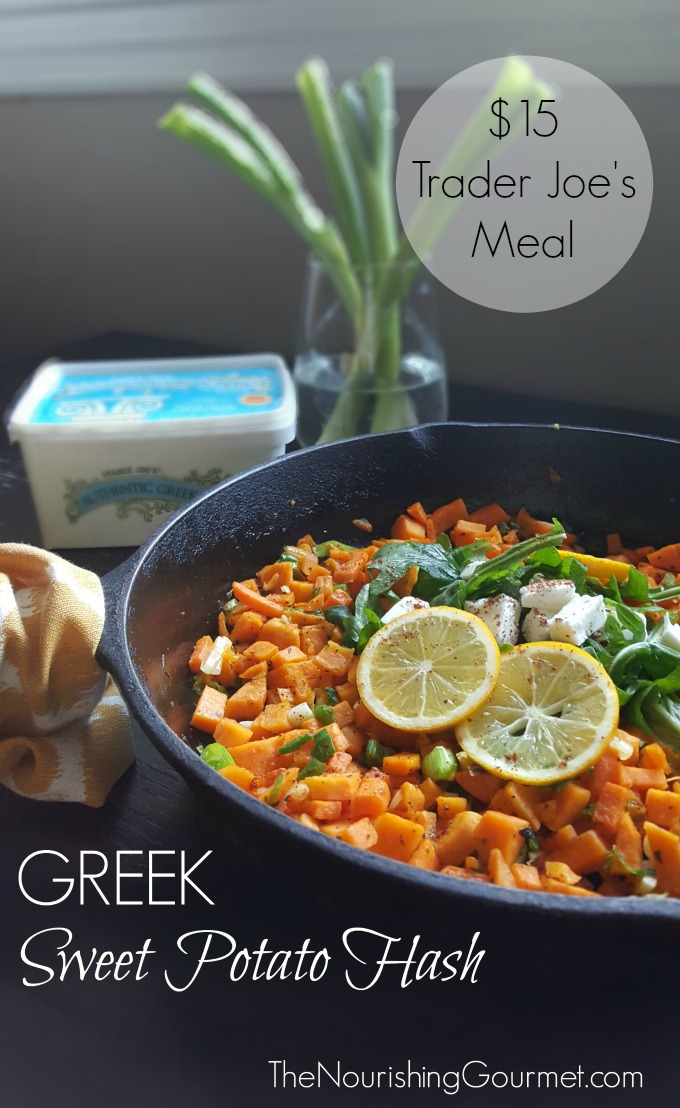
- 2 pounds sweet potatoes (about 4 large), peeled and diced small
- 4 scallions, diced
- 2 cloves of garlic, minced
- 1-2 tablespoons dried oregano, to taste
- unrefined salt and pepper, to taste
- 2 tablespoons cooking fat (ghee, bacon fat, coconut oil, etc.)
- OPTIONAL TOPPINGS:
- chunks of sheep feta
- arugula
- sumac
- This is a one-pot meal if you halve the recipe. But with the quantity of sweet potatoes, it's necessary to make it in two skillets.
- Heat two skillets over medium heat and add 1 tablespoon cooking fat to each. When hot, add diced sweet potatoes and cook until they start to soften, about 5-10 minutes. Add a little salt.
- Add the scallions and cook another 5 minutes, or until they start to get a little crispy. (Add extra fat if needed.)
- Reduce the heat to medium-low. Add the garlic and oregano and cook another 5 minutes being careful not to burn the garlic.
- Season to taste with salt and pepper.
- Serve with a lemon wedge, a pile of arugula on top and some feta if desired. I also like to sprinkle on a little sumac.
